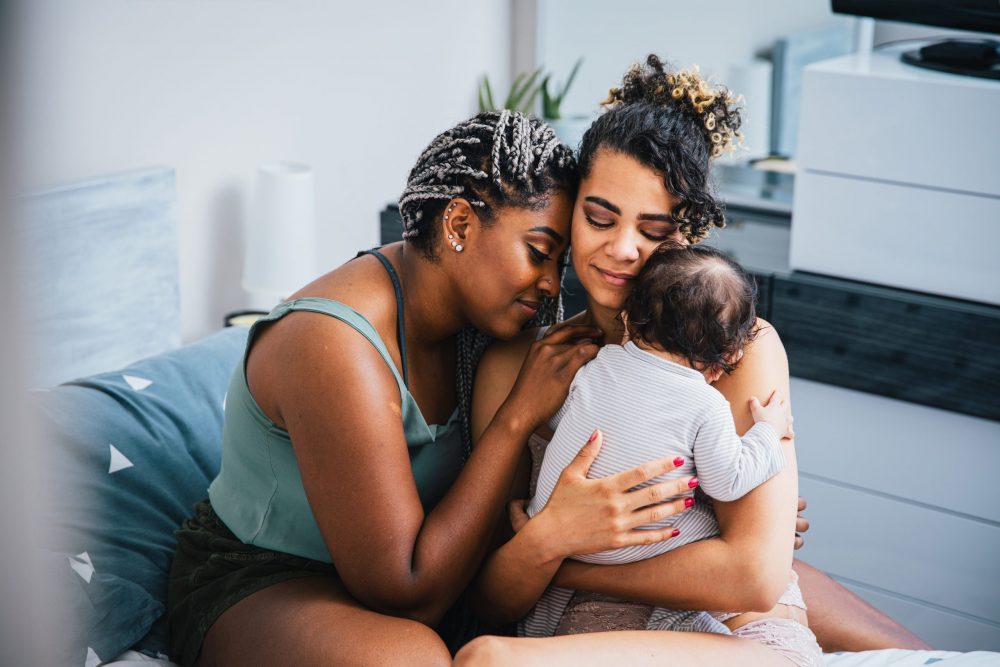From Ikea featuring the first openly gay couple in a 1994 advertisement, to Secret Deodorant’s trans-inclusive commerical in 2016, LGBTQ+ visual content in marketing, advertising and entertainment has progressed over the years.
However, while great strides have been made, too often the LGBTQ+ experience is represented by stereotypes and falsehoods.
As a gay woman, I can remember how the lack of authentic and accurate queer visibility impacted me growing up. Seeing yourself represented in the world with dignity is important. When you capture images of the LGBTQ+ community, you’re capturing people.
Visual portrayal of this community needs to change to reflect the whole and unique everyday lives of gay and trans people Imagery that is overtly sexual, or imagery featuring highly defined LGBTQ+ cues, such as rainbow flags and Pride parades, fails to reflect the whole and unique everyday lives of gay and trans people. This needs to change — we need to create imagery that’s truly representative of all aspects of daily life.
Stop pink and rainbow washing
To ensure we’re moving forward as a society, photographers, marketers and advertisers must acknowledge the history of LGBTQ+ messaging, and grow from it.
In the past, LGBTQ+ representation was viewed as both progressive and polarising. Early adopters of LGBTQ+ advertising – such as Ikea and Subaru – were considered particularly radical.
The Good Brigade, Offset by Shutterstock
Now that LGBTQ+ marketing has acquired mainstream status, we need to start interrogating just how helpful certain depictions and representations truly are. ‘Pinkwashing’ and ‘rainbow washing’ – where brands presented themselves as ‘gay friendly’ for corporate gain – is still happening today.
This pigeonholes the queer experience into idiosyncrasies characterised by rainbow flags, protesting, or overt sexual intimacy. Instead of being showcased as human beings with hobbies, careers, and healthy relationships, the LGBTQ+ community are being defined by their sexual and gender identities. Just as brands have moved away from the over-simplistic objectification of women, it’s time the wider creative industry changes their behavior and attitudes towards the represenation of the queer community. To creators of visual content: let’s move away from sexual and gender-driven content and instead get back to what we all do – straight or queer – in everyday moments; like buying a house, traveling, commuting to work, or having coffee with friends.
An open letter to creatives
The LGBTQ+ community is diverse, and visual content needs to reflect this. There’s more to our community than white, cis gender male models in their early-to-mid-twenties. When photographing people in the LGBTQ+ community, it’s important to take pictures that are as diverse as the community itself. This includes older individuals and couples, interracial families, queer youth getting ready for their high school prom, or a middle-aged, non-binary person with their partner.

For photographers, marketers or creatives that are new to capturing images of people in the LGBTQ+ community, do your due diligence. In 2020, gender fluidity and nonbinary identity has become common place, and outward apperance doesn’t always align with personal identification.
Be respectful and diligent when representing queer individuals. For example, don’t depict trans women with photos of cisgender men (term for people whose gender identity matches the sex that they were assigned at birth), or depict trans men with photos of cisgender women. Similarly, avoid assuming ‘masculine’ or ‘feminine’ roles based on appearance and consider framing, body language and composition to ensure the subjects are portrayed with respect.
Be aware, not afraid
Creatives, we ask you to create space for our diverse communities and educate yourselves on the lived experiences of others. Help us share our stories but, at the same time, understand you do not own our narrative. We do.
Please do your homework. Seek out topical LGBTQ+ news and understand the conversations occurring within the community. Monitor the reactions from LGBTQ+ leaders and organisations towards portrayals within media, advertising and entertainment. Use these reactions – whether positive or negative – to inform all activity. Remember, your image could be the first representation of an LGBTQ+ person that an audience member has ever seen. A good rule to follow: If you’re not sure about something, don’t take the photo. Instead, do some research and ask someone before moving forward with your shoot.
Whether you’re a creative, a marketer, a director or photographer, your role in society is not to be underestimated. With 90 percent of information transmitted to the brain being visual, the power of imagery is phenomenal.
Being in a position of creating, distributing and amplifying visual content is a privilege, so channel that talent into the positive reshaping of society. As creatives, we are the arbiters of the world’s imagery, we have the privilege of influencing what the world sees, and as such we have a duty to our communities and our audience to provide the most inclusive and authentic collection of content and stories on earth. Here are some examples of how you can represent the intersectional lived experiences of the queer community.

About the Author:
With a focus on creating experiences and products customers love, Grete enjoys being on Shutterstock’s awesome Product Operations team. A passionate history buff, she views the past and its lessons as roadmaps that can influence positive change for products and people. An award winning filmmaker and a community advocate, she has worked to craft and produce impactful media, harness storytelling for marginalized communities and make the invisible, visible, while creating accessibility opportunities, through creative tech, for visual content, oral histories and archived materials.